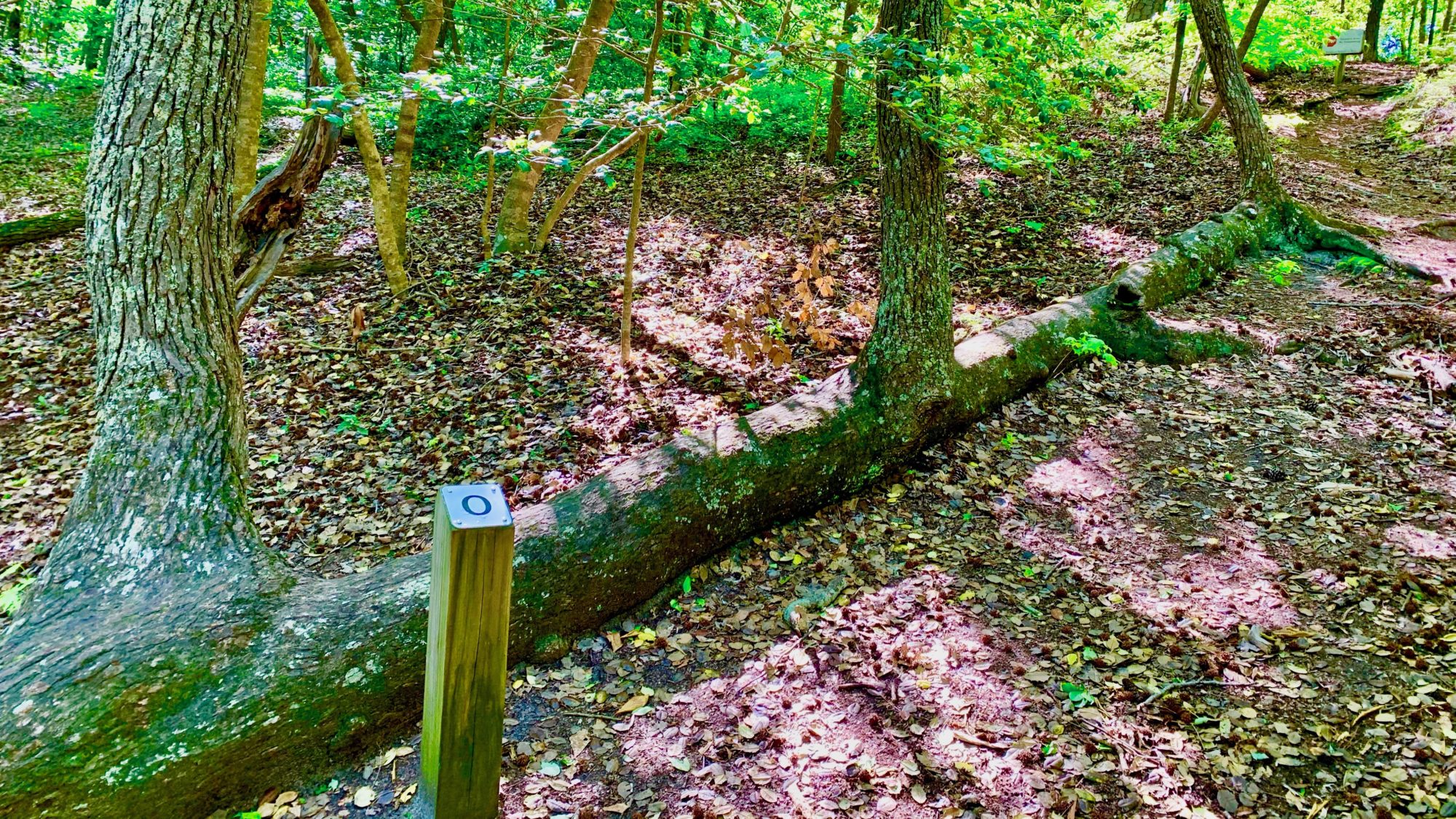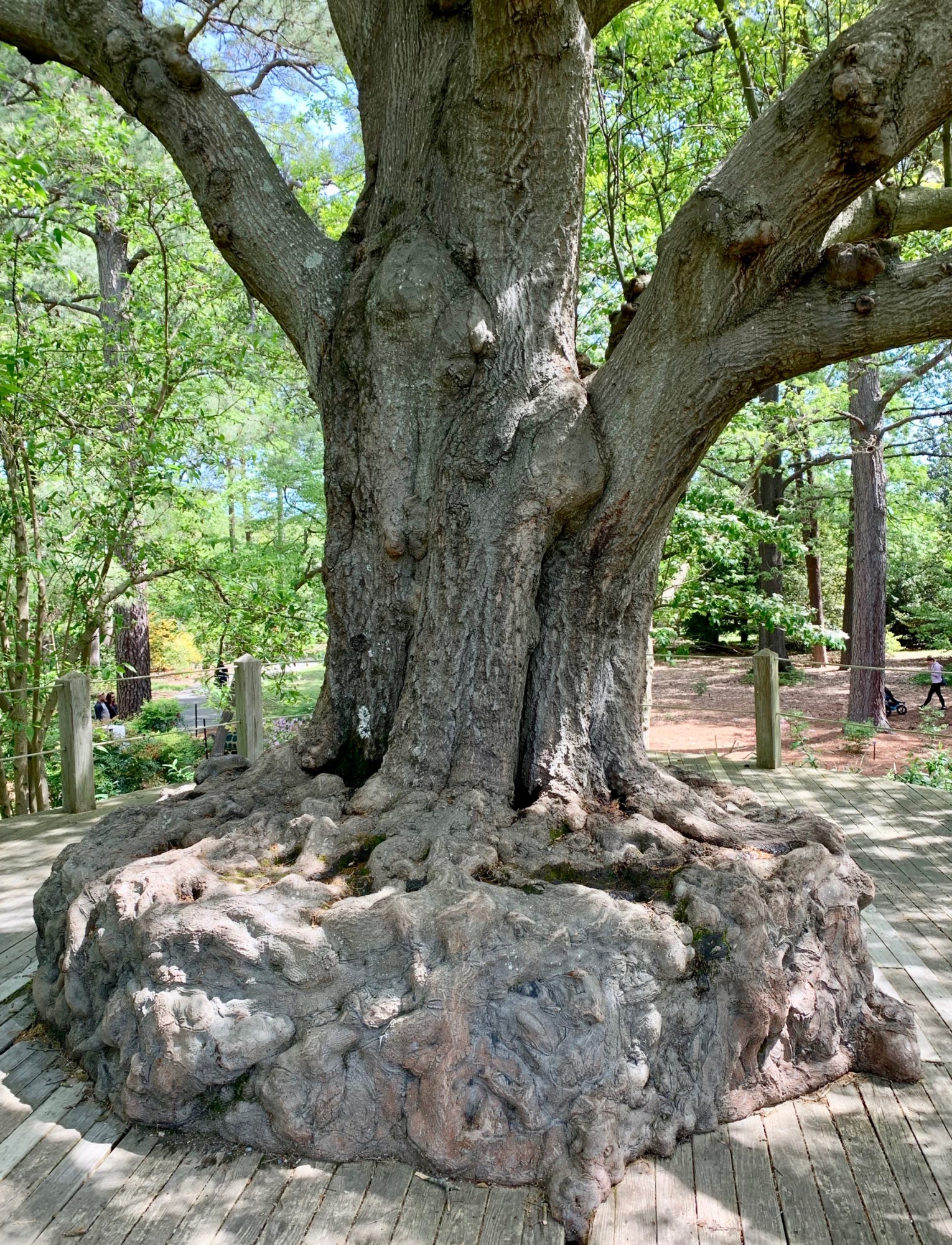
by Mary Reid Barrow
Just give me some room. Let me reach for the sky and give me a place to send down my roots and I’ll be fine is the mantra of the trees.
Look at this sweetgum that fell on Fox Run Trail in First Landing State Park. Its limbs have become trees and its trunk has grown roots anew.
An old pine tree in the park, hoary with age, still lives though its trunk is stretched out horizontally over Long Creek and half its roots are upended like a huge skeleton on the sandy shoreline.
These trees are two of many in the park that are casualties of the environment. Whether because of erosion or storms, trees get toppled, or they may get knocked cattywampus or split almost in two when another tree falls on them. Still, many continue to persist under the most un-tree-like circumstances.
If you look, you will find resilient trees all over the park, but we rarely see them in neighborhoods. Once a tree falls, or gets injured, it’s rarely allowed to remain in place, because it’s deemed a hazard to people, homes and cars.
Sadly what’s a hazard to us humans is often a blessing to creatures, large and small, who continue to find homes and food in trees in all conditions. I imagine that’s why the forces of nature have given trees such a will to live.
Fortunately for us, there is one such tree in full public view on top of Baker Overlook at Norfolk Botanical garden. At some point in its life many years ago, a wooden structure, perhaps a bench, was built round this persevering water oak when it was young.

But the oak, in a tree’s stoic determined way, said don’t fence me in. And it grew its roots round and round the structure. Now though the structure—stricture might be a better word–has been removed, the tree roots still retain its shape.
Take a walk at the garden and visit the tree. Try to imagine the perseverance it took to compete with what must have felt like a corset round its trunk and still come out a winner.
Recently trees that have withstood the test of time and adversity over the years have been in the news. How about the 1,000-year-old weeping cherry tree in Japan that has survived earthquakes, storms and even lived through Japan’s nuclear disaster a decade ago to bloom again every spring.
Here’s a link to a Daily Kos article about many more tenacious trees:
On a different note, the Icelandic Forest Service has suggested that we should hug a tree since we can’t hug each other in this time of social distancing:
I agree. Trees, gritty and resolute, deserve all the hugs we can give them.
Do you have a favorite tree, a secret tree grove or neighborhood climbing tree that you love? Let me know your stories about trees, the critters who live in them and the insects that dine on them. Send an email to maryreid@lrnow.org